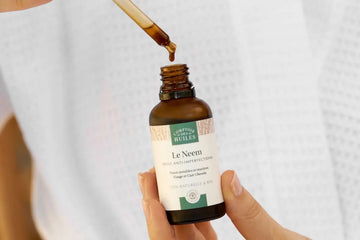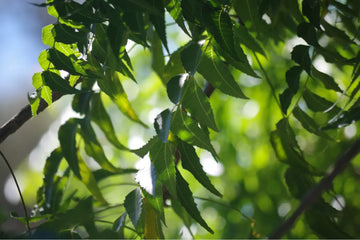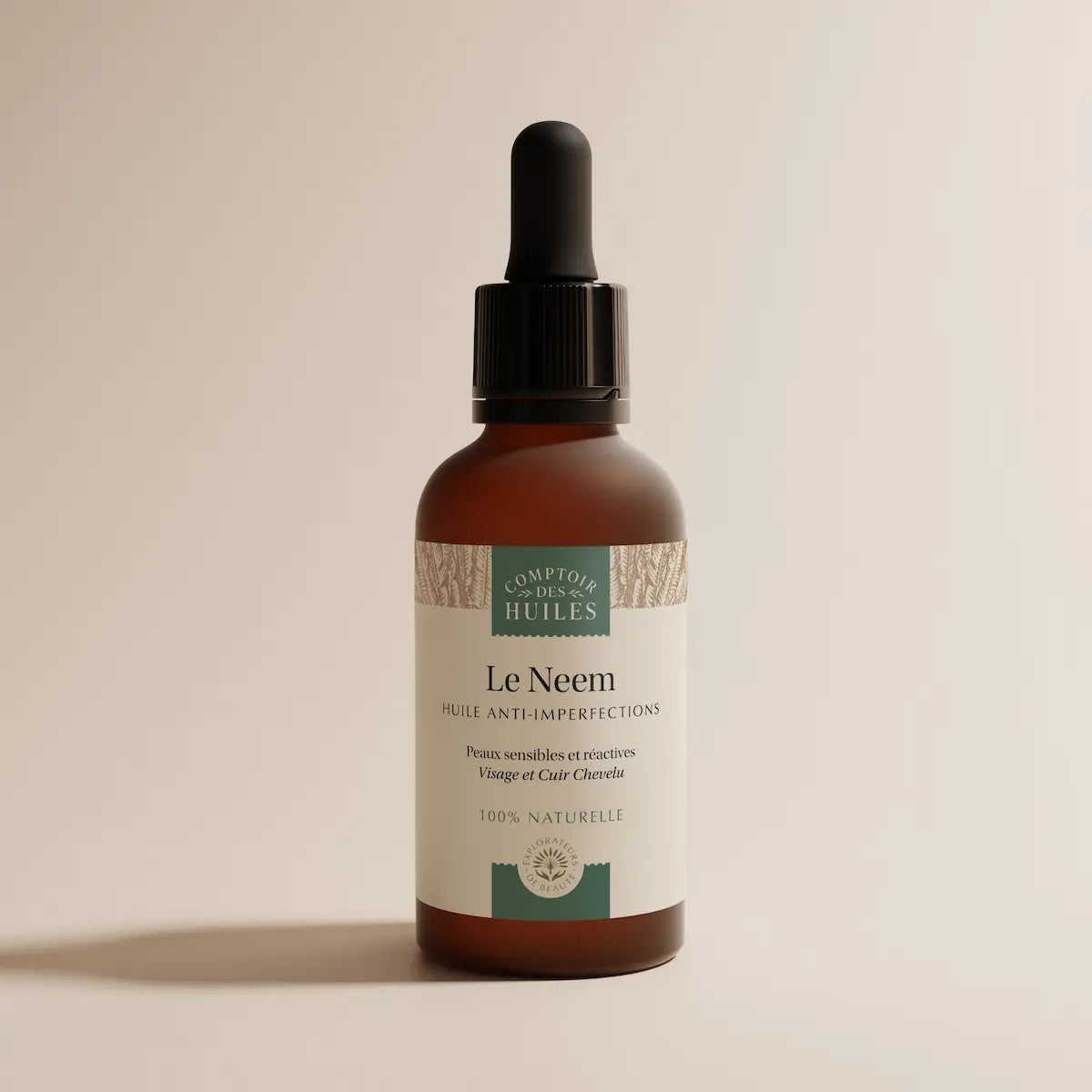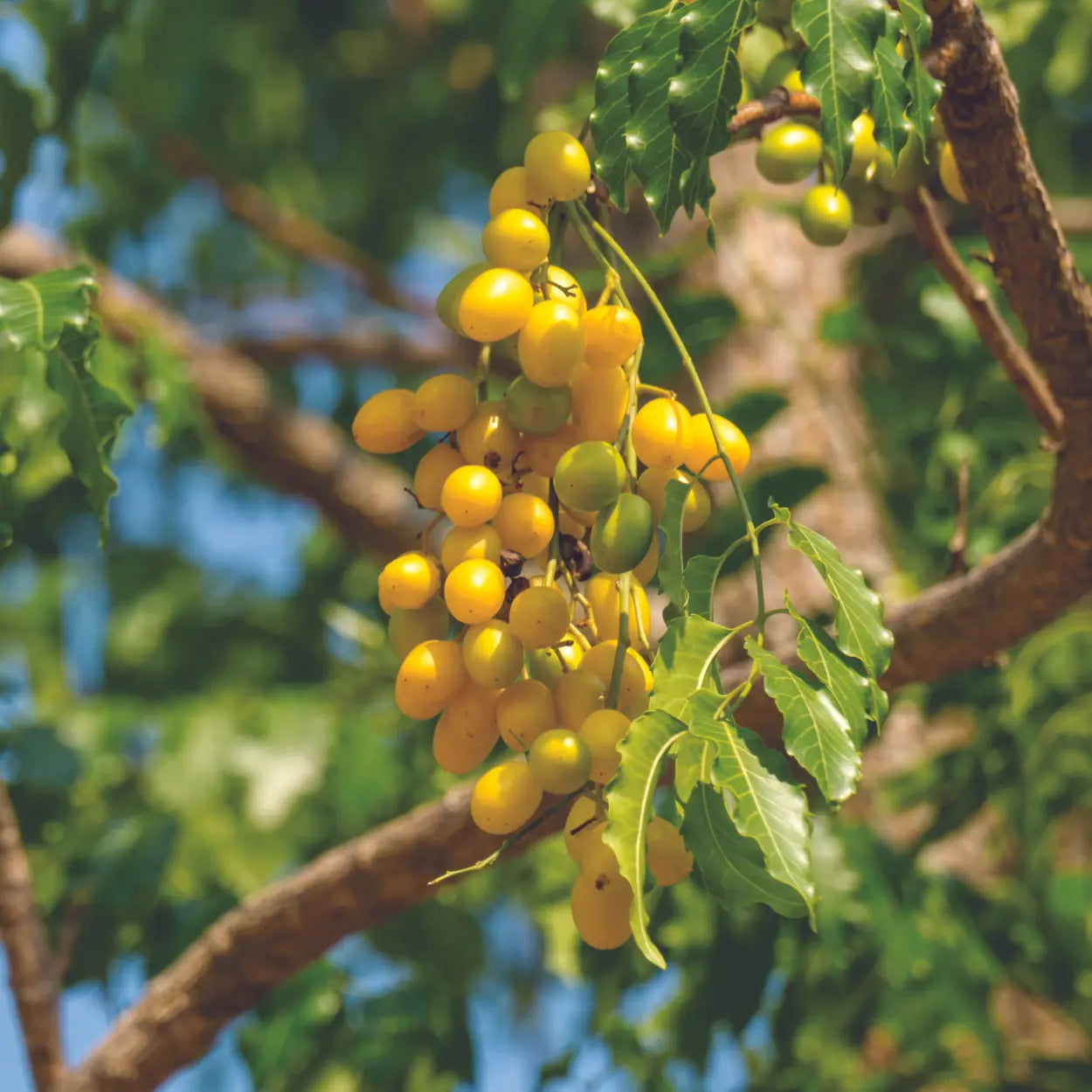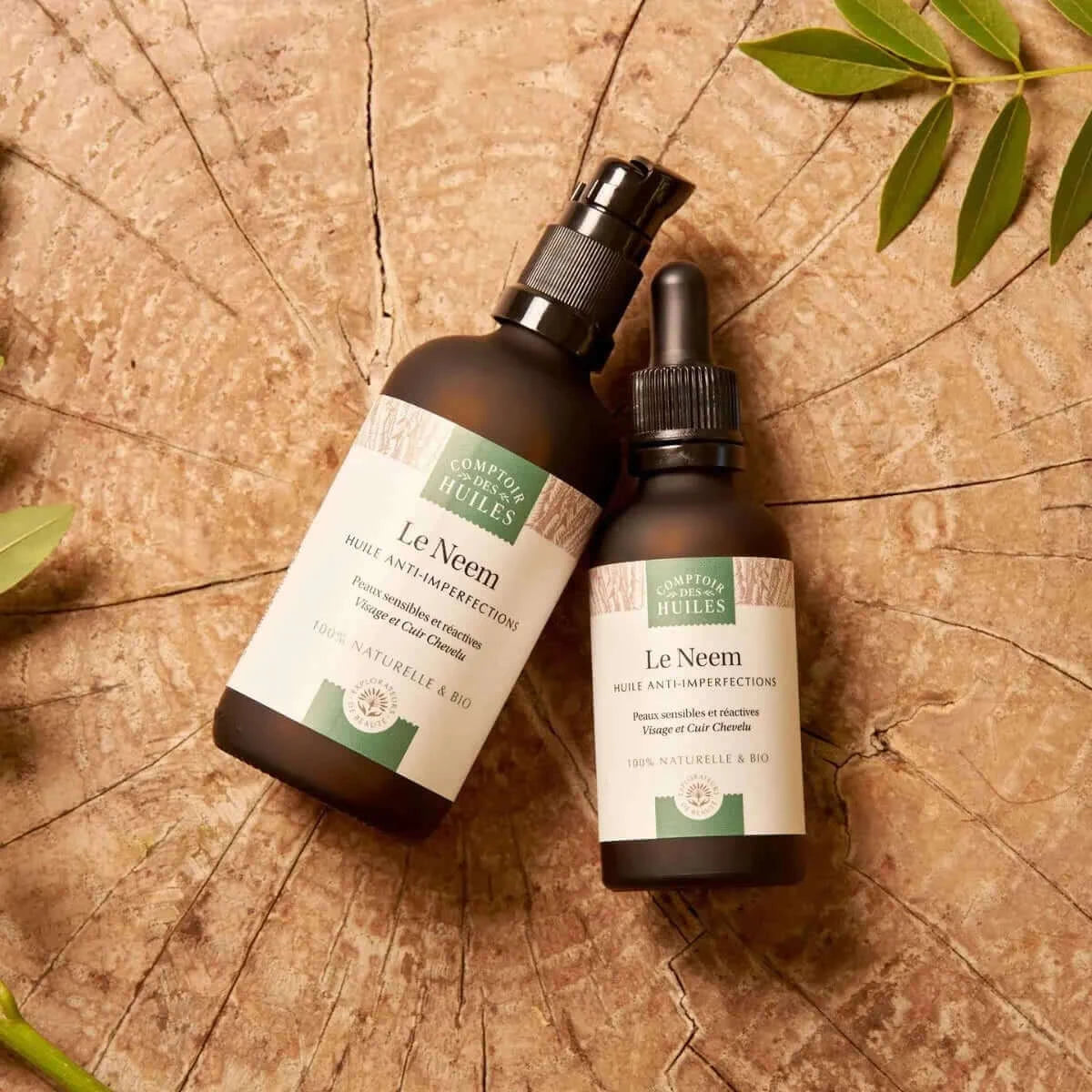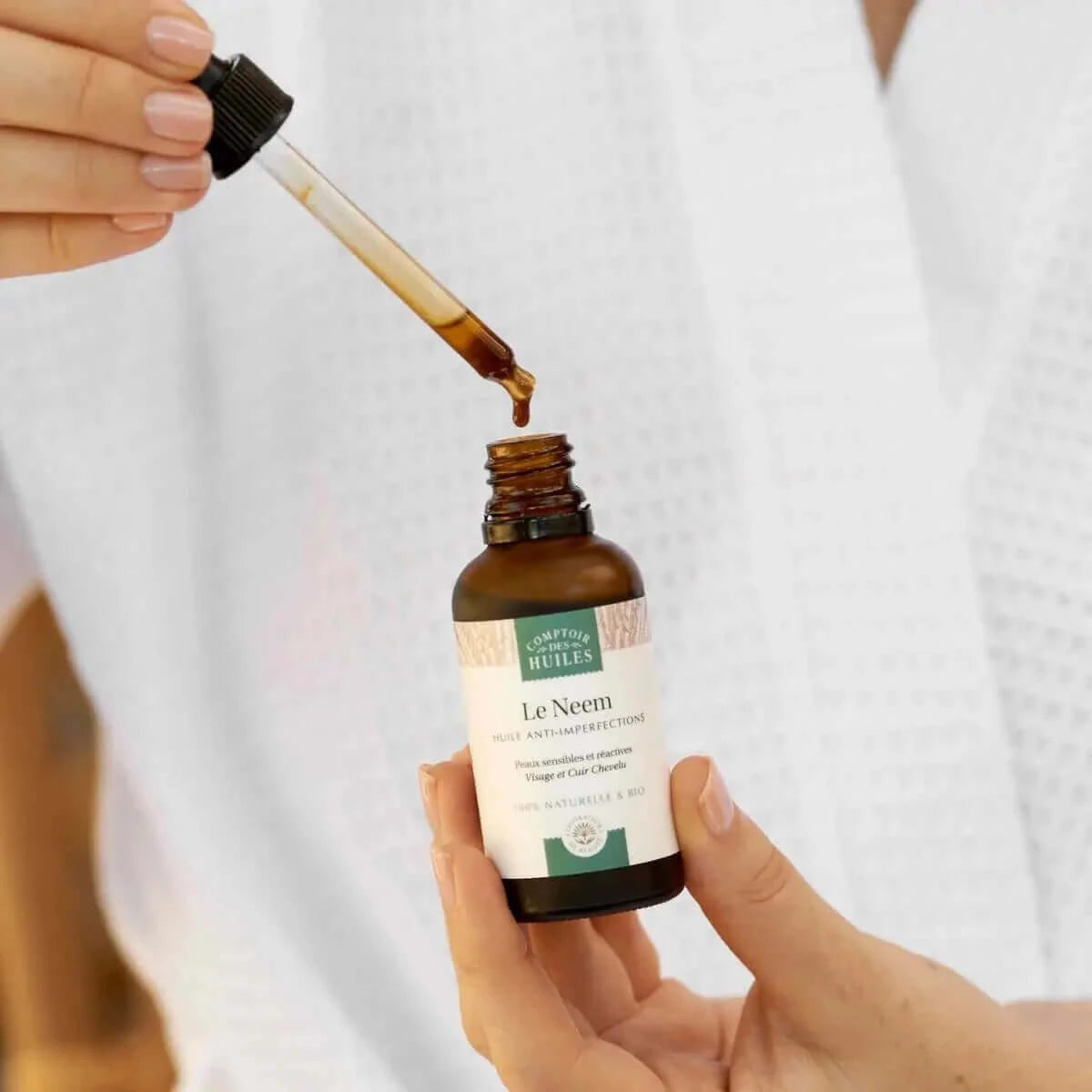Everything you need to know about an extraordinary plant: Neem.
Our expert in ethnobotany, Doctor Mamy offers us his knowledge on the plant of our Neem oil and its benefits.
What are the characteristics of the Neem plant?
The neem tree, or neem, NIMO in Madagascar, azadirachta indica, belonging to the meliaceae family is a tree native to India. The tree grows mainly in the Indian subcontinent, but it is currently cultivated in climates of the same type throughout the world, because its usefulness is recognized, and it is a very beautiful ornamental tree.
It is recognized in Ayurveda as nature's pharmacy. In traditional medicine, all parts of the plant, from the bark to the leaves including the flower, fruit, seeds and root are used to treat several diseases, in Sanskrit azadirachta means "which cures all diseases".
What are the virtues of Neem?
Neem oil is extracted by pressing the fruits.
Neem is a natural vegetable oil, known for its anti-inflammatory properties regulating enzymatic activities, notably cyclooxygenation (COX) and lipooxygenation (LOX) enzymes. This vegetable oil is also appreciated for its moisturizing and regenerating skin properties and for the treatment of eczema or acne thanks to its antiseptic and antibacterial properties.
What are other non-cosmetic uses of Neem oil?
In Madagascar the Neem plant is called "the Plant of 150 diseases". Moreover, the leaves and bark enter with other plants, such as the roots of the Madagascar Periwinkle (Catharanthus roseus), in the composition of Mangidy, which are the famous bitter herbal teas sold by itinerant merchants to treat the joints, the immune system, digestion, the nervous system and the oral sphere.
Other formulations of MANGIDY with Neem are used as a general tonic and to treat feverish illnesses (including malaria). The powder of dried leaves and/or bark is used in poultices with water to treat small skin problems (wounds, abrasions and insect bites).
Be careful, you should not ingest Neem oil because of azadirachtin which is a powerful insecticide. The use of plants for treatment must be done by first seeking advice from a doctor, pharmacist or herbalist.
Neem oil can also be used as a mosquito repellent. In addition, the plant arouses the interest of farmers, it produces different substances, particularly azadirachtin, in its fruits, leaves and wood, which prove to be powerful biopesticides, effective on more than 400 species of insects. , parasites and fungi of agricultural and forestry crops.
Who is Mamy, our expert in Ethnobotany?
Doctor RAZAFIMANDIMBY Hanitriniaina Rabetanety known as Doctor Mamy, is a Malagasy doctor and ethnobotanist, specialist in Malagasy medicinal plants.
His passion and knowledge of plants were passed on to him by his father, who was a “Water and Forestry Agent”. He spent his entire childhood and part of his adolescence in the forests of eastern Madagascar.
From 1994 to 2018, he worked in collaboration with the Société Parfums Christian DIOR, of the LVMH Group, with the Ethnobotanical Innovation Department (DIE). One of the pillars of the DIOR Global Ethnobotany Network, he has worked on more than 350 Malagasy plants with the company. Thus, he is the Co-inventor of a flagship product of DIOR cosmetics.
He also worked on some Malagasy plants with the SILAB Company of Saint Viance, a French cosmetic engineering company which develops “biological active ingredients”.
In May 2013, Dr Mamy represented Madagascar in Ouagadougou, Burkina Faso for the fourth edition of the International African Beauty Forum (FIAB).



